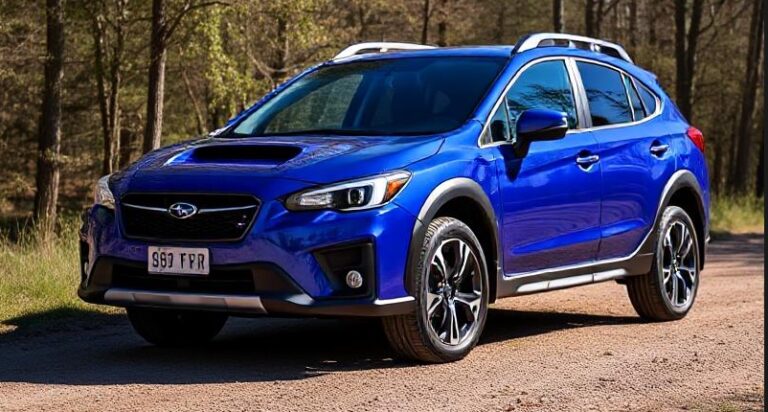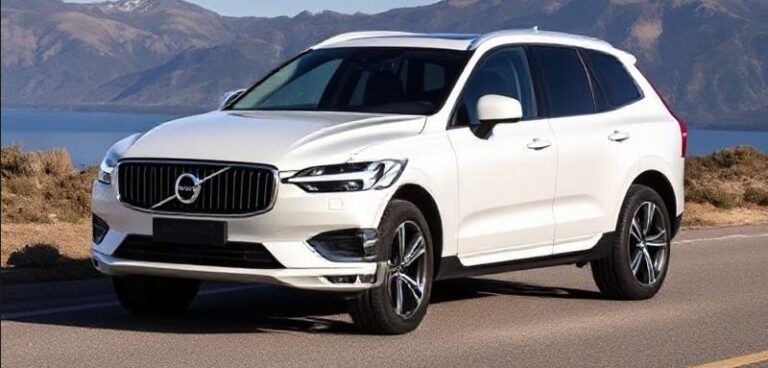The Evolution of the Suzuki Jimny
The Suzuki Jimny is an iconic compact off-road vehicle that has captured the hearts of driving enthusiasts worldwide since its inception. Known for its rugged capability, compact size, and distinctive boxy design, the Jimny has undergone numerous transformations over the decades, evolving in response to shifting automotive trends, technological advancements, and safety standards. This article provides a detailed chronological account of the Jimny’s development, covering production years, various models, and trim levels offered throughout its history.
Origins and First Generation (1970–1980)
Introduction and Background
The Suzuki Jimny was first introduced in 1970 as a kei car—a category of small, lightweight vehicles popular in Japan to benefit from tax and insurance advantages. Originally named the Suzuki LJ10, the vehicle was designed primarily for the Japanese domestic market but quickly garnered attention for its off-road capabilities and compact size.
First Generation (SJ Series: 1970–1980)
- Models and Variants:
The initial Jimny was based on Suzuki’s LJ series, specifically the LJ10 and LJ20 models. The key variants during this period included: - LJ10 (1970–1972): Powered by a 360 cc two-stroke engine, it was designed as a lightweight, utilitarian off-roader.
- LJ20 (1972–1980): Upgraded to a 539 cc two-stroke engine, this model offered more power and slightly improved performance.
- Design and Features:
The first-generation Jimny featured a simple, boxy design with a two-door body style. It was equipped with a part-time four-wheel-drive system, a manual transmission, and minimal amenities, emphasizing durability and off-road capability over comfort. - Trim Levels:
During this era, trim levels were minimal, primarily distinguished by equipment packages rather than named trims. Variations mainly included basic versions and utility models for commercial use.
Second Generation (SJ Series: 1981–1998)
Introduction and Development
The second-generation Suzuki Jimny, designated as the SJ Series, marked a significant evolution in design, technology, and global reach. Introduced in 1981, this version retained the utilitarian spirit but with enhanced comfort, safety, and versatility.
Key Models and Variants
- SJ10 (1981–1985):
The initial SJ model, equipped with a 0.8-liter (796 cc) or 1.0-liter (970 cc) four-cylinder engine, both carbureted. It was primarily available in Japan and select markets. - SJ30 (1984–1989):
An important facelift, featuring a more rounded body and improved interior. The SJ30 was available in both soft-top and hardtop configurations. - SJ410 (1984–1989):
Known as the “Little Samurai” in some markets, this model offered a 1.0-liter or 1.3-liter engine, with 4-speed manual and optional 3-speed automatic transmissions. It was renowned for its off-road prowess. - SJ413 (1986–1998):
The most iconic of the second-generation models, featuring a 1.3-liter four-cylinder engine with fuel injection introduced in later years. This model was exported globally and became the basis for many off-road enthusiasts’ builds. - SJ410 and SJ413 Variants:
These models came in several body styles: soft-top, hardtop, and wagon, catering to both utilitarian and recreational purposes.
Design and Features
The second-generation Jimny maintained the classic boxy shape but incorporated more modern touches, including improved suspension systems, better seating comfort, and increased safety features such as seat belts and, in later years, optional air conditioning.
Trim Levels
In various markets, particularly outside Japan, trim levels included:
- Base: Minimal equipment aimed at utilitarian use.
- Country or Ranch: Slightly upgraded with features like better interior trim, optional air conditioning, and improved seats.
- Wide or Luxury Trims: Available in some markets, featuring additional comfort and convenience features.
Third Generation (JB Series: 1998–2018)
Introduction and Major Changes
The third-generation Suzuki Jimny, designated as the JB Series, was launched in 1998. This model marked a significant design overhaul, combining modern aesthetics with advanced off-road capabilities. It was produced globally, including markets in Japan, Europe, Australia, and emerging markets.
Models and Variants
- JB43 (1998–2005):
The initial third-generation model, featuring a more rounded, modern design. It was available with a 1.3-liter petrol engine and, in some markets, a 1.5-liter variant. - JB64 (2005–2018):
An updated version with subtle styling tweaks, improved safety features, and better interior quality. - Special Editions and Variants:
During this era, Suzuki released several special editions, such as the Jimny Sierra in certain markets, with exterior decals, alloy wheels, and interior upgrades.
Powertrain and Features
- Engines:
Primarily equipped with a 1.3-liter K-Series petrol engine (G13BB) producing around 85 horsepower. Some markets also offered a 1.5-liter petrol engine (G15A) with increased output. - Transmission:
5-speed manual was standard, with a 4-speed automatic available in higher trims. - Drivetrain:
The Jimny retained its part-time four-wheel-drive system, with high and low-range gearing, emphasizing off-road capability. - Safety and Comfort:
Over time, models incorporated improved safety features such as airbags, anti-lock braking systems (ABS), and electronic stability control in later years.
Trim Levels
Trim options varied by market but generally included:
- Base/Standard: Basic off-road configuration with essentials.
- Xtreme or X-Adventure: Sportier trims with alloy wheels, roof rails, and interior upgrades.
- Luxury or Limited Editions: Featuring leather seats, upgraded audio, and additional comfort features.
.

.
Fourth Generation (Jimny JB74: 2018–Present)
Introduction
The most recent Jimny, designated as the JB74, was launched in 2018 and marked a return to a more traditional, rugged aesthetic reminiscent of earlier models. It was designed with a focus on off-road performance, compactness, and modern technology.
Design and Features
- Exterior:
The JB74 features a boxy, retro-inspired look with round headlights, flat body panels, and a high ground clearance. It measures approximately 3.6 meters in length, maintaining its status as a kei-compatible vehicle in some markets but is larger than previous Jimnys in global markets. - Interior:
The cabin focuses on functionality, with modern infotainment systems, touchscreen displays, and safety features such as lane departure warnings and advanced driver-assistance systems (ADAS).
Models and Trim Levels
- Suzuki Jimny JX, JLX, and Sierra:
These trims offer a progression from basic to more equipped versions, with options including: - Basic JX: Manual windows, cloth seats, minimal tech.
- JLX: Adds features like alloy wheels, cruise control, and upgraded interior materials.
- Sierra: Top-tier trim with leather upholstery, navigation, and advanced safety tech.
- Powertrain Options:
The JB74 comes with a 1.5-liter naturally aspirated four-cylinder petrol engine producing approximately 102 horsepower. It is paired with either a 5-speed manual or a 4-speed automatic transmission. The vehicle features an all-wheel-drive system with selectable modes optimized for off-road and on-road driving. - Special Editions:
Suzuki has released various special editions, such as the Jimny 20th Anniversary, which includes unique color schemes and interior details.
Safety and Technology
Modern Jimnys are equipped with ESP (Electronic Stability Program), hill descent control, and multiple airbags, reflecting contemporary safety standards. The vehicle’s compact size and advanced off-road technology make it popular among urban drivers seeking adventure and off-road enthusiasts.
Global Market Variations and Notable Models
Throughout its history, Suzuki has tailored the Jimny to suit regional demands. In Japan, the Jimny has often been available as a kei car, adhering to specific size and engine regulations, whereas in Europe, Australia, and other markets, larger versions with more powerful engines have been popular.
Special Editions and Limited Runs
Over the decades, Suzuki has released several limited editions and special trims to celebrate milestones or boost appeal:
- Jimny Sierra (2008–2018):
Marketed in some regions as the “Jimny Sierra,” featuring cosmetic and equipment upgrades. - Jimny Cross and Adventure Editions:
Focused on enhancing off-road and outdoor appeal with unique decals, roof racks, and rugged styling cues. - Heritage and Retro Models:
In the JB74 generation, Suzuki introduced retro-inspired editions to evoke nostalgia for earlier models.
Legacy and Future Outlook
The Suzuki Jimny’s evolution underscores its steadfast commitment to off-road capability, compactness, and affordability. Its simple yet rugged design has made it a favorite among outdoor enthusiasts, urban drivers, and collectors alike.
Looking ahead, Suzuki has announced plans to continue refining the Jimny with an emphasis on eco-friendly technologies, potentially including hybrid variants. The vehicle’s enduring popularity suggests that the Jimny will remain a significant player in the compact SUV segment for years to come.
Conclusion
From its humble beginnings in 1970 as a kei car to its modern-day incarnation as a globally recognized off-road icon, the Suzuki Jimny has demonstrated remarkable adaptability and resilience. Its various models and trim levels over the decades reflect an ongoing balance between rugged utility, modern comfort, and safety technology. As Suzuki continues to innovate and evolve the Jimny, its legacy as a compact, capable, and charming off-roader remains firmly rooted in automotive history.







